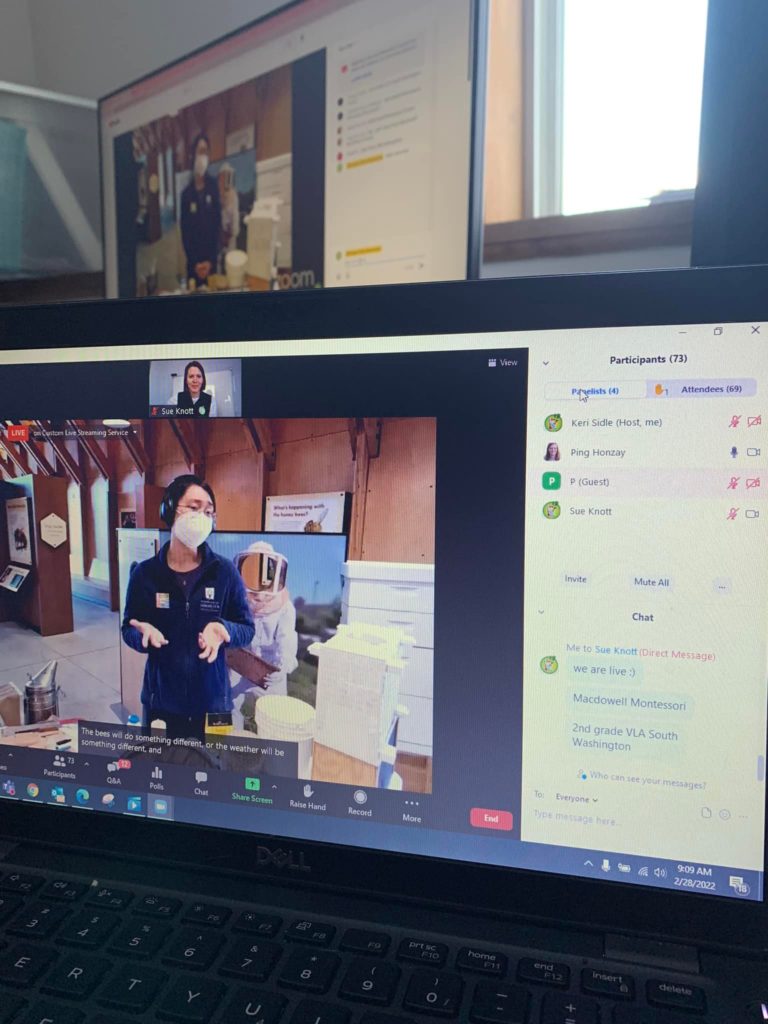Bees and other pollinators are essential for plant, animal, and human health around the world. Join us on a virtual field trip as we visit Ping Honzay at the Tashjian Bee and Pollinator Discovery Center in Chanhassen, MN.
About the Tashjian Bee and Pollinator Discovery Center
The Tashjian Bee and Pollinator Discover Center is located at the University of Minnesota Landscape Arboretum in Chanhassen, Minnesota. Ping Honzay is the Farm at the Arboretum Educator Coordinator who will walk us through the virtual field trip. Their honeybees are inside their hives during the winter as they shiver for warm and eat honey for their food source. During the visit, Ping will show and teach us all about bees, their homes and how they live.

How Bees Arrive at the Tashjian Bee and Pollinator Discovery Center
In April, Ping will be picking up some more bees for the Bee and Pollinator Discover Center. The honeybees come from California. Ping will pick up the honeybees in a box from Stillwater, Minnesota. A box of bees can also be mailed to your house. In one box of bees, there is about three pounds of bees inside which equals about 10,000 bees.
Once at the Bee and Pollinator Discovery Center, the honeybees are transferred from the box into their hives. To do this, Ping demonstrates by taking out a tin can from the top of the box. This can has tiny holes in the bottom and holds the sugar water, or feed, for the honeybees. With tongues similar to straws, the honeybees are able to drink the sugar water through the tiny holes on the bottom of the can. Inside these boxes, all the bees are girls and each box only has one queen bee that is housed within her own small cage to keep her safe. Once the queen is safely retrieved from the box, the other honey bees are gently dumped and shaken into their hive. The queen is added to the hive last from her travel cage.
Inside the Honeybee Hive
The cover on the top of the hive is similar to the roof of our homes. Think about its purpose similar to how a roof keeps rain, snow and other weather from getting into our homes. Then inside of the hive are boxes that stack on top of each other. The boxes are hollow inside. This is great as it allows the honeybee hive to grow. If the bees need more room, another box can easily be stacked on top of the others. Think of the boxes stacking of top of each other similar to how a bigger family needs a bigger house - a bigger hive needs more space. The frames within the boxes are where the honeybees make their honey and also where the queen may lay her eggs.
To learn more about honeybees, how the role the queen has inside of the hive and more, check out the virtual field trip to the Tashjian Bee and Pollinator Discovery Center video.

